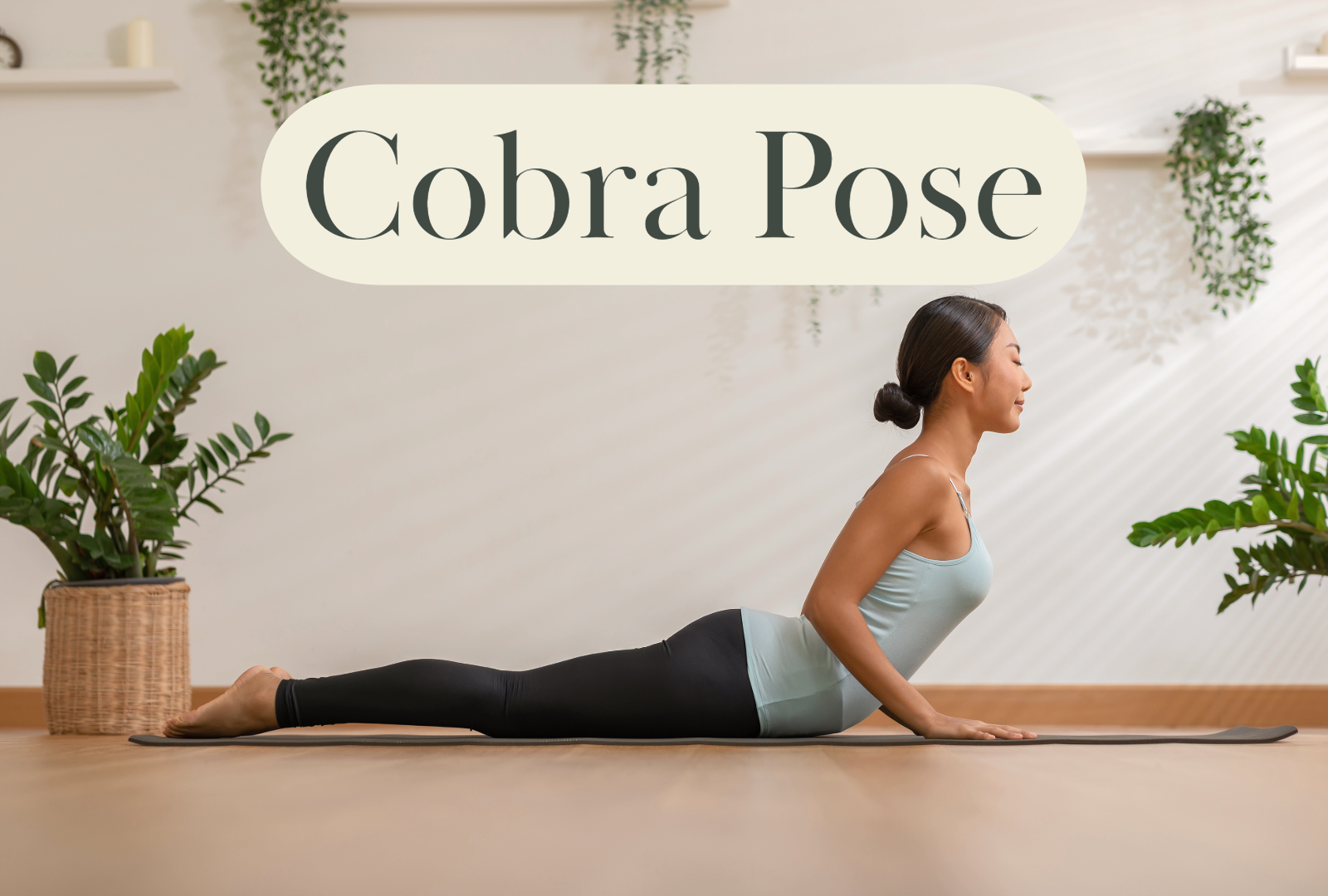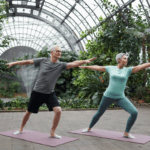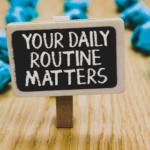Coming Soon: E-book about Kundalini Yoga - Sign up here to be among the first to get it!
Sanskrit: Bhujangasana
Type: Prone Pose
Chakra Involved: Throat Chakra (Vishuddha Chakra), Heart Chakra (Anahata Chakra), Solar Plexus (Manipura Chakra), Sacral Chakra (Swadisthana Chakra), Root Chakra (Muladhara Chakra)

Cobra Pose (Bhujangasana)
Cobra Pose, or Bhujangasana, is a foundational backbend pose in yoga that strengthens the spine, opens the chest and shoulders, and stimulates the abdominal organs. This pose is excellent for improving posture and alleviating lower back stiffness. It’s often included in the Sun Salutation sequence and is suitable for yogis at all levels.
Starting Position
Begin by lying face-down on your yoga mat with your legs extended behind you, tops of the feet pressing into the mat. Place your hands on the mat under your shoulders, elbows hugging close to your body.
Step-by-step Instruction
- Forehead on Mat: Start with your forehead resting on the mat, hands under shoulders, and legs pressed together.
- Inhale and Lift: Inhale and gently lift your head, chest, and shoulders off the mat by straightening your arms. Keep your elbows slightly bent and close to your body to engage the muscles of your back rather than relying solely on arm strength.
- Engage Your Legs: Press the tops of your feet, thighs, and hips into the mat. Engage your leg muscles to support the lift of your upper body.
- Open Your Chest: Draw your shoulders back and down away from your ears, opening your chest forward. Keep your gaze forward or slightly upward, ensuring your neck remains long and not strained.
- Hold the Pose: Maintain the pose for 15 to 30 seconds, breathing smoothly and deeply.
- Use Core Strength: Engage your abdominal muscles to support your lower back throughout the pose.
To Release the Pose
- Exhale and Lower Down: On an exhale, gently lower your chest, head, and shoulders back to the mat.
- Relax: After releasing the pose, turn your head to one side and rest, placing your arms alongside your body. This gives your spine a moment to relax and neutralize.
Teacher’s Tip
- Alignment: Ensure your hands are correctly placed under your shoulders and your elbows are close to your body to avoid straining the lower back.
- Depth of the Pose: Encourage students to lift to a height that is comfortable for their back, emphasizing that the depth of the backbend should come from the strength and flexibility of the back muscles rather than the arms. Remind them to keep the pubic bone pressing into the mat to protect the lower back.
- Breathing: Advise students to focus on their breath, inhaling as they lift into the pose and exhaling as they release. This facilitates a deeper connection between the body and mind, and supports movement.
- Modifications: For those with lower back discomfort, recommend keeping the elbows bent and the lift gentle. Props like a folded blanket under the hips can provide additional support.
Practicing Cobra Pose regularly can significantly improve spinal flexibility, strengthen the back muscles, and enhance posture, contributing to overall well-being.
Variations of Cobra Pose (Bhujangasana)
Cobra Pose is versatile, with several variations to suit different levels of flexibility and focus areas. Here are some common variations along with instructions for each:
1. Baby Cobra
- Instructions: Lie face down, place your hands under your shoulders, and hug your elbows to your sides. Inhale and lift your head and chest off the mat, keeping your lower ribs on the mat. This version is gentler and focuses on strengthening the lower back.

2. Sphinx Pose
- Instructions: Lie on your stomach and prop yourself up on your forearms, with elbows under shoulders and forearms parallel to each other. Press your palms and forearms into the mat, lift your chest, and engage your lower back and abdominals. This variation offers a milder backbend and is suitable for beginners or those with lower back sensitivity.
3. King Cobra
- Instructions: From the Cobra Pose, bend your knees and bring your feet towards your head. Reach back with your hands and hold onto your feet or ankles. Lift your chest higher, pushing your feet into your hands to deepen the backbend. This advanced variation intensifies the stretch in the back and opens the chest and shoulders further.
4. Cobra Pose with Block
- Instructions: Place a yoga block under your hands as you set up for Cobra Pose. This elevates your upper body slightly higher, allowing for a deeper backbend. Ensure you maintain engagement in your back muscles to support the pose and prevent compression in the lower back.
5. Cobra Pose with a Twist
- Instructions: Enter into Cobra Pose, then gently twist your torso to one side, looking over the shoulder of the side you are twisting towards. This adds a rotational component to the pose, enhancing spinal mobility and stretching the obliques. Return to center and repeat on the other side.
6. Extended Cobra
- Instructions: From Cobra Pose, slide your hands forward until they are no longer under your shoulders but are still pressing down into the mat. This variation increases the length of the spine and deepens the backbend. Keep your elbows slightly bent to maintain engagement in the back muscles.
Implementation Tips
- Warm-Up: Ensure that your spine is properly warmed up before attempting deeper variations to avoid strain or injury.
- Listen to Your Body: Choose the variation that best suits your current level of flexibility and strength. Avoid pushing into pain or discomfort.
- Alignment and Engagement: In all variations, maintain the integrity of the pose by keeping your shoulders away from your ears, engaging your legs, and distributing the backbend evenly along the spine.
- Breath: Maintain steady, even breaths to support the pose and deepen your practice.
Incorporating these variations into your practice can help develop greater spinal flexibility, strength, and awareness, offering a range of benefits and challenges as you progress.
FAQ about Cobra Pose
Cobra Pose (Bhujangasana) offers a myriad of benefits, making it a cherished pose in yoga practice:
- Strengthens the Spine: It strengthens the muscles of the spine, contributing to improved posture and spinal health.
- Stretches Chest and Lungs: Opens up the chest and lungs, enhancing breathing capacity and invigorating the body.
- Activates Abdominal Muscles: Gently tones the abdomen, aiding in digestion and stimulating abdominal organs.
- Relieves Stress and Fatigue: By opening the chest, it helps in releasing the stress and fatigue that often accumulates in the body.
- Therapeutic for Asthma: The chest expansion can benefit those with asthma, though it should be practiced with caution and awareness of one’s limits.
- Improves Flexibility: Increases flexibility in the back and shoulders, counteracting the stiffness caused by sitting and daily activities.
For beginners, holding the Cobra Pose for 5 breaths, around 15 to 30 seconds can be beneficial. As you gain more experience and comfort with the pose, you can gradually increase the duration to 1 to 2 minutes. It’s important to maintain smooth and even breathing throughout the hold, focusing on relaxing into the pose with each exhale.
While Cobra Pose is generally safe, certain individuals should avoid it or practice with caution:
- Pregnant Women: Especially in the later stages of pregnancy, lying on the belly can be uncomfortable and is generally advised against.
- Individuals with Severe Back Injuries: Those with recent or severe back injuries should consult with a healthcare provider before attempting this pose.
- People with Hernia: The pressure on the abdomen may aggravate the condition.
- Those with Carpal Tunnel Syndrome: The weight-bearing aspect of the pose can strain the wrists.
- Individuals with Headaches or Migraines: The pose can sometimes exacerbate these conditions.
- Start Position: Lie prone on the floor with your legs extended back, tops of the feet on the floor, and hands placed under your shoulders.
- Engage Legs: Press the tops of your feet and thighs firmly into the floor.
- Lift Into Cobra: On an inhale, begin to straighten your arms to lift your chest off the floor. Only go as high as comfortable, keeping your elbows slightly bent and hugged to your sides.
- Focus on Length: Rather than focusing on how high you can go, concentrate on lengthening your spine and opening your chest. Keep your shoulders relaxed and away from your ears.
- Gaze Forward: Keep your neck in a neutral position, gazing straight ahead. Avoid crunching your neck back.
- Hold and Release: Hold the pose for a few breaths, then gently lower your chest back to the floor on an exhale.
For beginners, practicing Cobra Pose with mindfulness about alignment and personal limitations can lead to significant benefits in flexibility, strength, and mental well-being.




